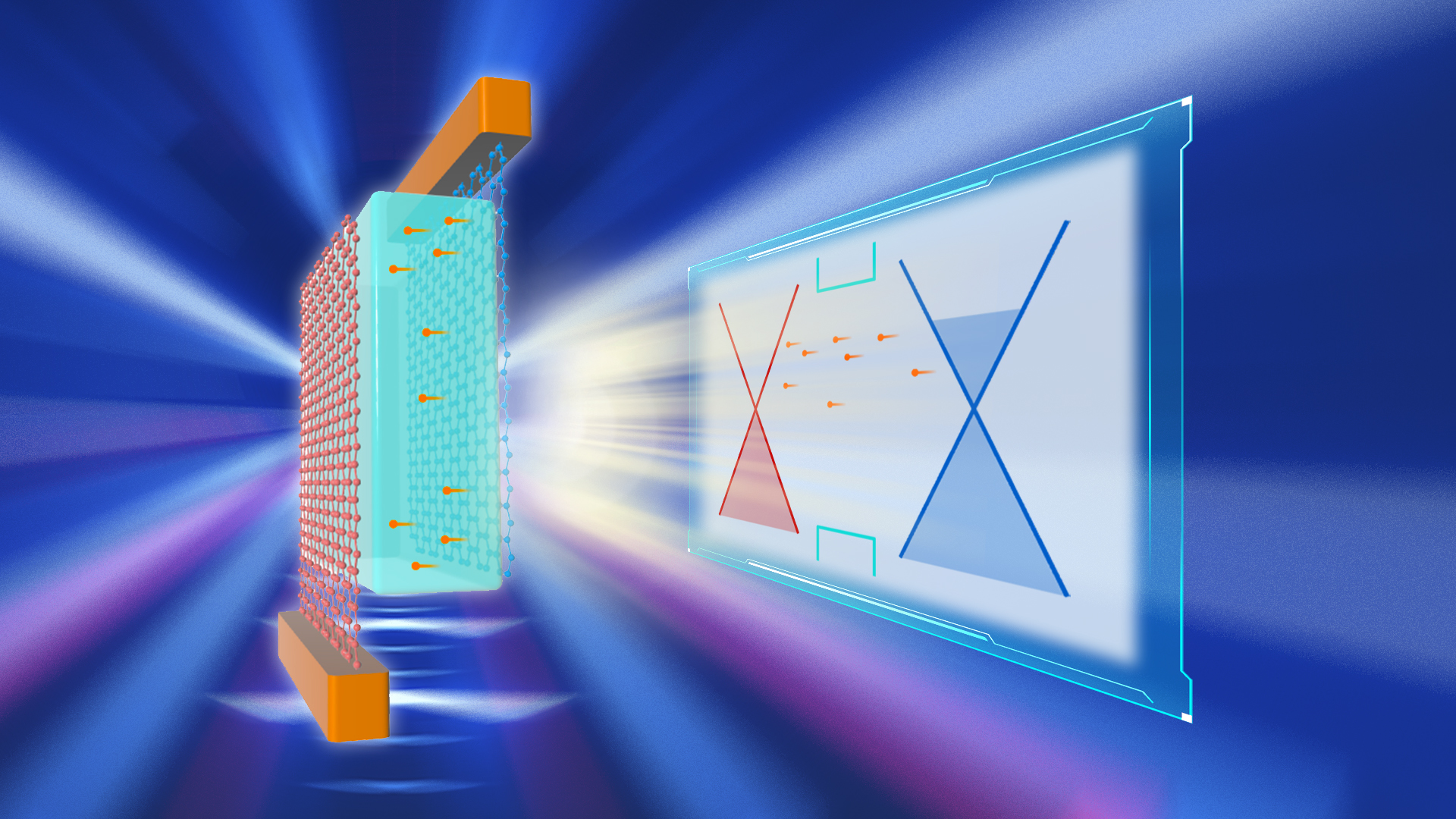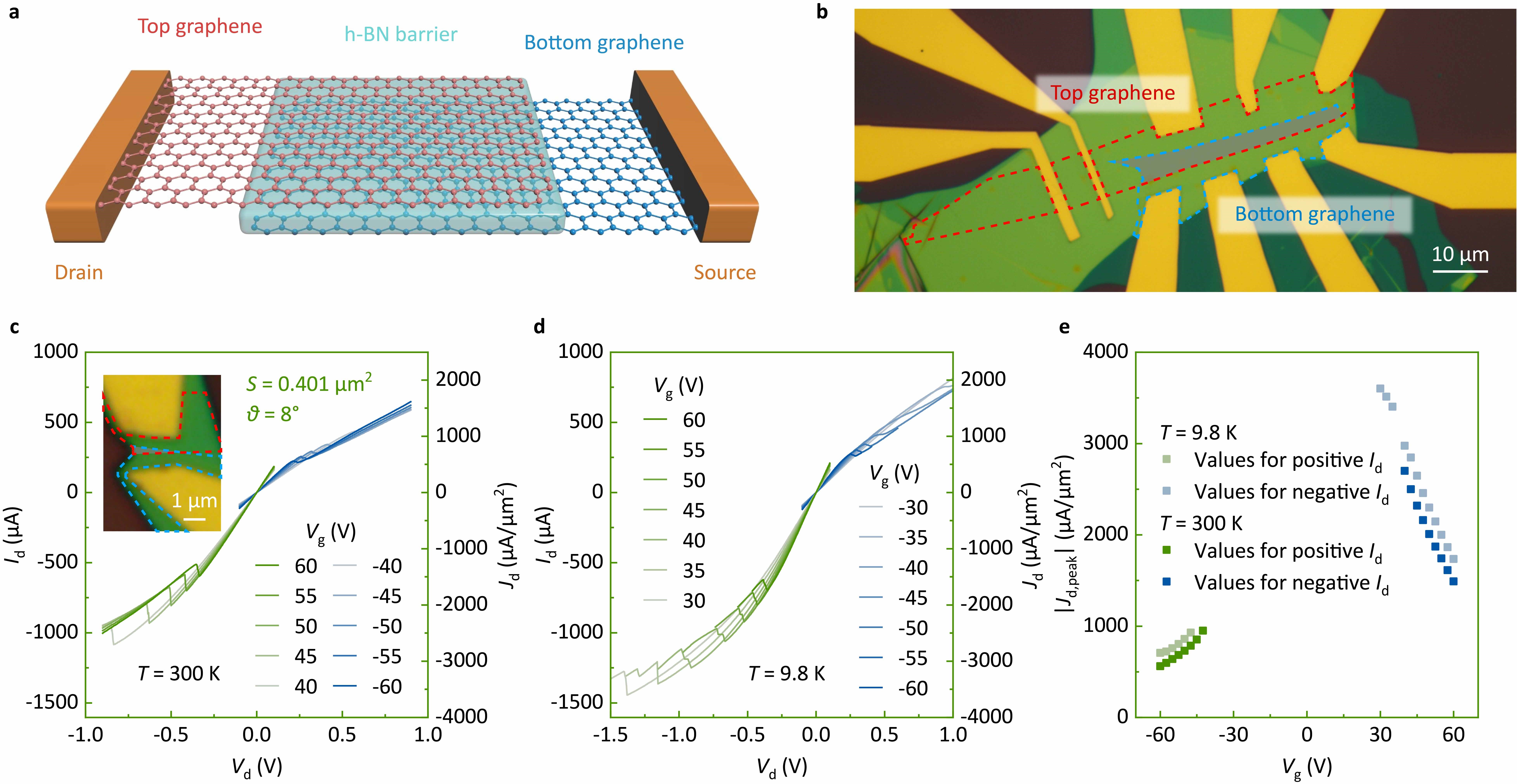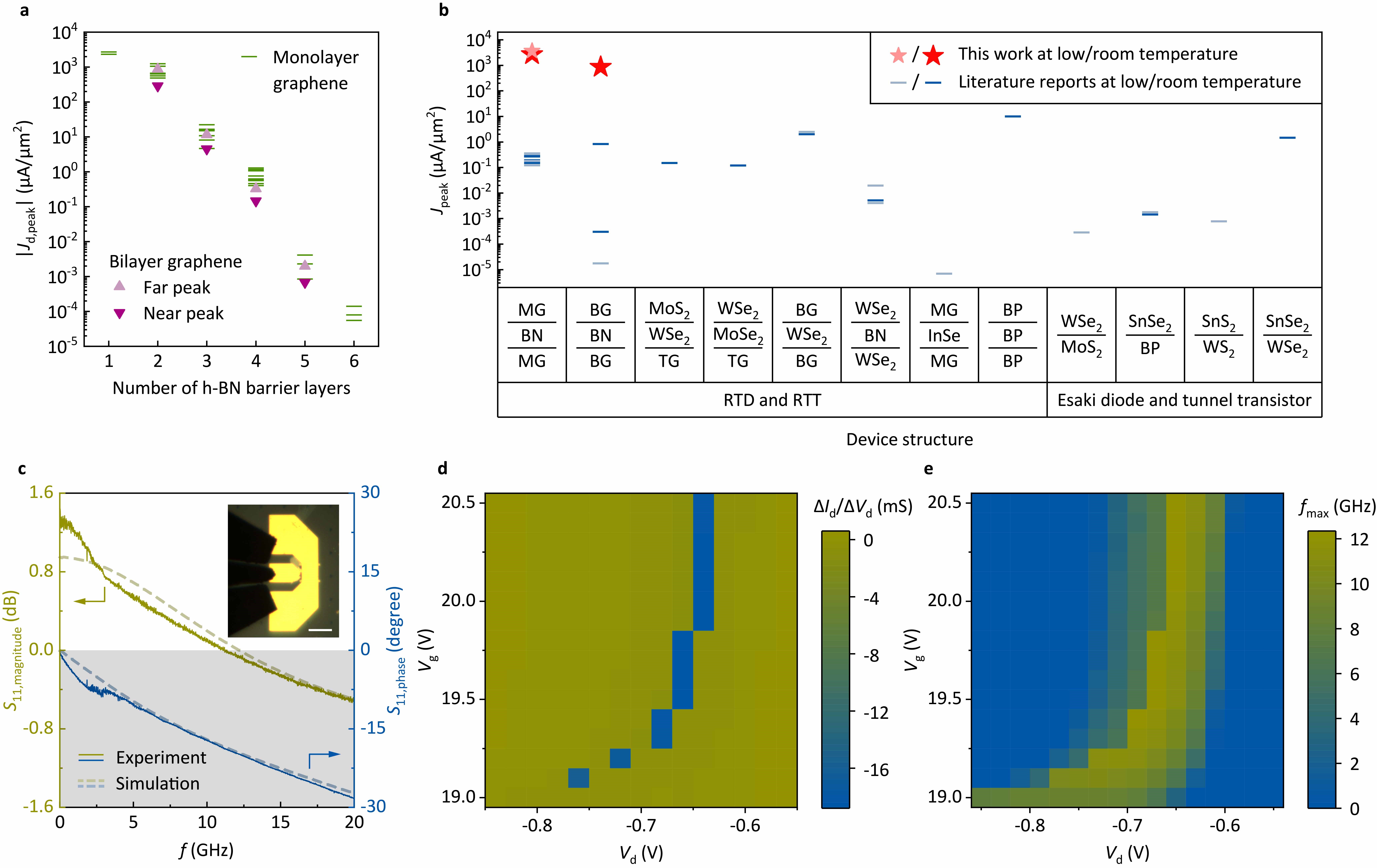Negative differential resistance (NDR) is a unique electrical characteristic where current decreases with increasing voltage. This counterintuitive behavior endows it with distinctive application potential in oscillators, multivalued logic circuits, and memory devices. This phenomenon can be realized through quantum tunneling devices such as resonant tunneling transistors, where band engineering of the tunneling junction plays a crucial role in property modulation.
Recent years have witnessed significant advancements in 2D material-based tunneling devices. Benefiting from their inherent atomically flat surfaces and dangling-bond-free characteristics, these materials provide an ideal platform for constructing vertical tunneling junctions with atomic-layer precision. However, previous literature reports showed that 2D tunneling devices typically achieved low peak current densities in NDR (≤10 μA/μm2), leading to large RC constants and low operating frequencies (≤2 MHz) that limit practical applications.

The research team led by Chair Professor Aimin Song from the Institute of Nanoscience and Applications at the Southern University of Science and Technology (SUSTech) has made new progress in fabricating high-performance 2D material-based resonant tunneling transistors.
Their related achievements were published in Nature Communications under the title “Toward high-current-density and high-frequency graphene resonant tunneling transistors”.

Figure 1. Structure and output characteristics of 2D material-based resonant tunneling transistors
Addressing the critical challenge of NDR characteristic suppression under high current densities, the research team systematically fabricated vertical Gr/h-BN/Gr devices with 1-5 atomic layers of h-BN barriers through precise interface engineering of 2D heterojunctions. Quantitative analysis based on the transmission line model revealed that contact resistance induced by electrode edge scattering in conventional rectangular channels could completely obscure NDR characteristics.
To overcome this, the researchers innovatively developed a triangular plasma etching technique combined with self-alignment processes, creating gradient-transitioned tapered electrode interfaces that successfully reduced parasitic resistance. This breakthrough enabled the observation of stable NDR effects in monolayer h-BN barriers, establishing a new paradigm for high-frequency quantum device development. The achieved room-temperature peak current density of 2700 μA/μm2 and operating frequency of up to 11 GHz demonstrate the application potential of 2D NDR devices in high-speed electronics.

Figure 2. Peak current density and operating frequency of 2D material-based resonant tunneling transistors
Postdoctoral researcher Zihao Zhang from SUSTech is the first author of the paper, with Professor Aimin Song serving as co-corresponding author. SUSTech is the first affiliated institution.
Paper link: https://doi.org/10.1038/s41467-025-58720-7
To read all stories about SUSTech science, subscribe to the monthly SUSTech Newsletter.
Proofread ByAdrian Cremin, Yilin ZHOU
Photo ByInstitute of Nanoscience and Applications